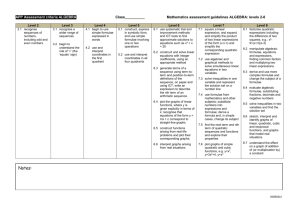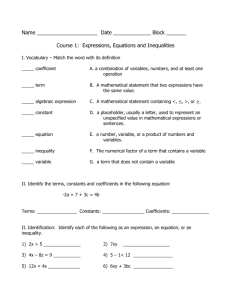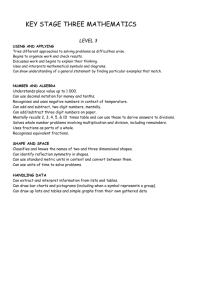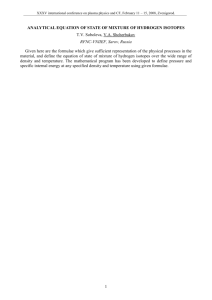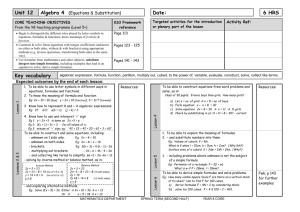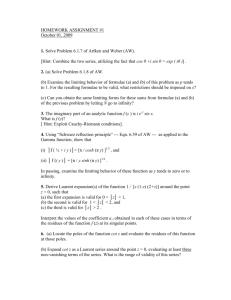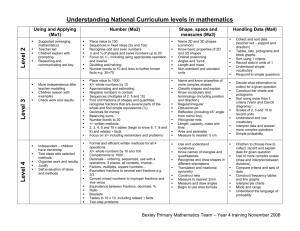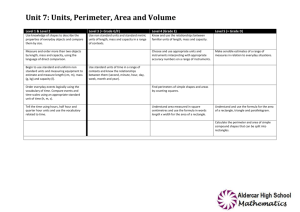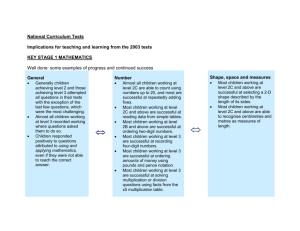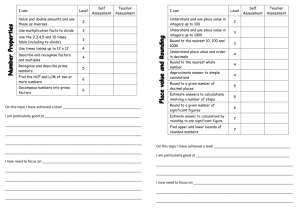Algebra
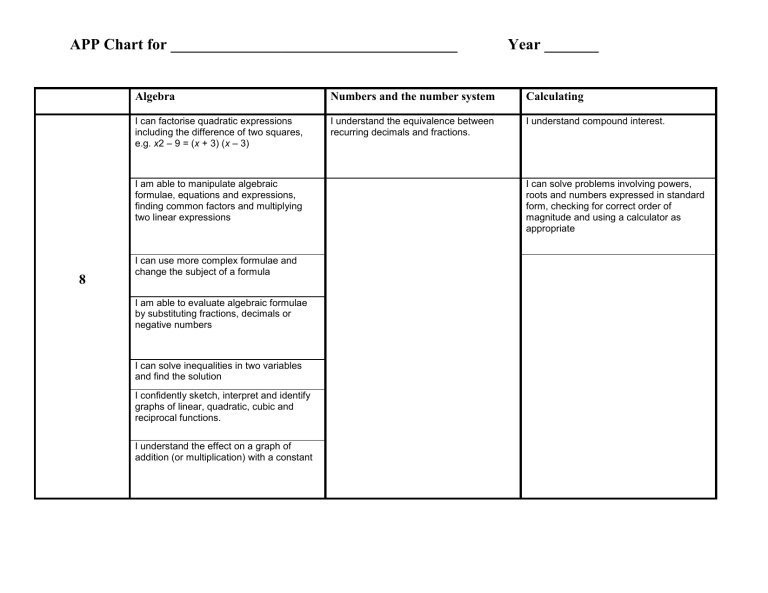
8
APP Chart for _____________________________________ Year _______
Algebra
I can factorise quadratic expressions including the difference of two squares, e.g. x 2 – 9 = ( x + 3) ( x – 3)
Numbers and the number system
I understand the equivalence between recurring decimals and fractions.
Calculating
I understand compound interest.
I am able to manipulate algebraic formulae, equations and expressions, finding common factors and multiplying two linear expressions
I can solve problems involving powers, roots and numbers expressed in standard form, checking for correct order of magnitude and using a calculator as appropriate
I can use more complex formulae and change the subject of a formula
I am able to evaluate algebraic formulae by substituting fractions, decimals or negative numbers
I can solve inequalities in two variables and find the solution
I confidently sketch, interpret and identify graphs of linear, quadratic, cubic and reciprocal functions.
I understand the effect on a graph of addition (or multiplication) with a constant
8
APP Chart for _____________________________________ Year _______
Using and applying Mathematics
I am able to develop alternative methods to solve problems
I frequently select and combine known facts and problem solving strategies to solve problems of increasing complexity
I examine generalisations or solutions reached in an activity, commenting constructively
Shape, Space and measure
I understand congruence and similarity
I understand and use trigonometrical relationships in right-angled triangles, and use these to solve problems, including those involving bearings
Handling Data
I can estimate and find the median, quartiles and interquartile range for large data sets using a cumulative frequency diagram
I can compare two or more distributions and make inferences, using measures of average and spread including median and quartiles.
I understand the difference between formulae for perimeter, area and volume by considering dimensions I know when to add or multiply two probabilities
I convey mathematical meaning through precise and consistent use of symbols on the reasoning and logic used
I have begun to recognise nets of familiar
3-D shapes, e.g. cube, cuboid, triangular prism, square-based pyramid
I reflect on lines of enquiry when exploring mathematical tasks
I am beginning to distinguish between practical demonstration and proof.
I can recognise shapes in different orientations and reflect shapes horizontally or vertically
I can use tree diagrams to calculate probabilities of combinations of independent events
I can construct bar charts and pictograms.
I know how to use Venn and Carroll diagrams to sort and classify information
I understand the importance of assumptions in proofs.
I can use a wider range of measures for length, capacity and mass using both metric, and imperial units.
I’m beginning to organise my work and check my results
I can describe position and movement
I can extract and interpret information presented in simple tables, lists, bar charts and pictograms
I can use and interpret mathematical symbols and diagrams
I am using standard units of time


